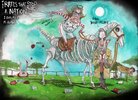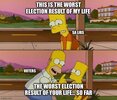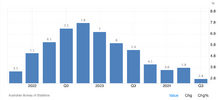RussellEbertHandball
Flick pass expert
That article made me go looking for this tweet by Kohler with his son Chris about housing issues back in August. I was going to post it back then but forgot.
I had no idea the Chris Kohler doing finance for 9 out of Melbourne (thought he was Sydney based), was Alan's son.
Get rid of 50% CGT exemption for housing. Go back to taxing the after inflation real gain, like when CGT was brought in, in 1985 and stop the distortion of investment in an asset class that should be a basic human need, not an investment opportunity, as per another Alan Kohler's graph shown in the video.
I had no idea the Chris Kohler doing finance for 9 out of Melbourne (thought he was Sydney based), was Alan's son.
Get rid of 50% CGT exemption for housing. Go back to taxing the after inflation real gain, like when CGT was brought in, in 1985 and stop the distortion of investment in an asset class that should be a basic human need, not an investment opportunity, as per another Alan Kohler's graph shown in the video.







